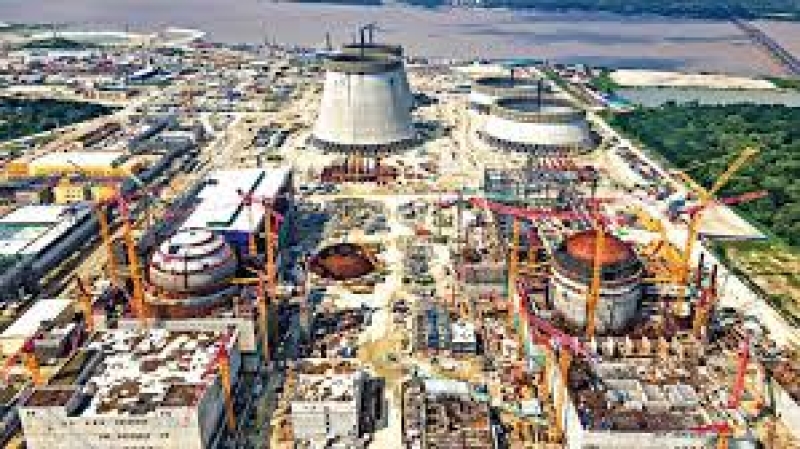- CA Yunus pays homage to Liberation War martyrs on Victory Day |
- Bangladesh capital market extends losing streak for second day |
- Bangladesh celebrates Victory Day Tuesday |
- 'Different govts presented history based on their own ideologies': JU VC |
Tk335cr Unused Rail Line for Rooppur Plant Sparks Concern

A Tk335 crore rail line, built for the transportation of cargo to Bangladesh's first nuclear power plant in Rooppur, Pabna, has remained idle since its completion in 2022, raising questions about wasteful spending and financial mismanagement during the previous administration.
The 26.52 km rail line, which was initiated under the Sheikh Hasina government, was intended to connect the Ishwardi Bypass Station to the Rooppur Nuclear Power Plant. Despite the absence of a rail line in the original master plan developed by Russian consultants for the plant, the Ministry of Science and Technology launched the project in 2018, with Bangladesh Railway overseeing its implementation.
The project was completed in June 2022, but the line has never been used. Furthermore, an audit report from 2020 identified financial irregularities totaling Tk321.66 crore in its construction.
The rail line, which was built with seven culverts, 13 level crossings, and a station platform, ends nearly 2 km short of the plant. Instead, a narrow dirt road unsuitable for heavy equipment connects the rail line to the power plant via the Hardinge Bridge. Notably, there is no passenger service planned for the line, and the rail track has yet to serve its intended purpose of transporting uranium to the power plant.
Md Fahimul Islam, Secretary at the Ministry of Railways, confirmed that the rail line was designed for transporting uranium but expressed uncertainty about its current use. The project’s director, Md Zahedul Hassan, similarly stated that the rail line has never been operational, and questioned the rationale behind its construction, given that there was no rail component in the plant's transportation master plan.
Instead, an international port near the Padma River has been used for transporting heavy equipment and supplies via Mongla seaport, with lighter items transported by air. The port became fully operational in August 2020 and has been handling materials from Russia for the construction of the Rooppur plant.
The project was launched in 2018 under the supervision of then-railways minister Md Mazibul Hoque, who had emphasized the necessity of the rail line for transporting heavy machinery to the plant. Despite these claims, the line has remained unused.
An evaluation report by the planning ministry, however, falsely claimed that the rail line was contributing to equipment transportation, even though no trains have been operated. The report also contradicted itself by claiming that all the financial anomalies highlighted in the audit had been resolved.
Among the irregularities identified in the audit were overpayments for construction materials, unnecessary purchases of rail and sleepers, and advance payments to contractors without proper approval. The project also suffered from substantial cost overruns, resulting in a significant financial loss for the government.
This unused rail line stands as another example of questionable financial decisions and lack of oversight, as millions of taxpayer dollars remain unaccounted for while the intended purpose of the infrastructure remains unmet.

